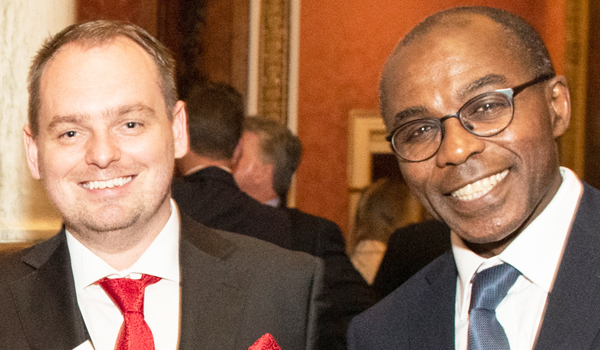BWV: Revolutionising the front line
Cameras are fast becoming a staple of the police service. Most police cars are equipped with dashcams, traffic and neighbourhood cameras are now commonplace and the use of police camera drones is steadily on the rise (see page 24).

Cameras are fast becoming a staple of the police service. Most police cars are equipped with dashcams, traffic and neighbourhood cameras are now commonplace and the use of police camera drones is steadily on the rise (see page 24).
Having footage of interactions with police officers greatly improves the ability to prove incidents happened the way they did and is often used as evidence in trials involving police. Unfortunately, stationary cameras cannot capture everything and frontline workers often find themselves in camera blind spots when on foot.
US police departments have historically been at the forefront of using new technology to make their jobs easier and safer.
In the late 1970s, video technology began to sweep through policing with the first cameras being equipped to police patrol cars. Back then, they consisted of a hefty VCR (videocassette recorder) bolted to the floor of the patrol vehicle and a bulky camera that was mounted on a tripod in the back and pointed through the windscreen. They were not inconspicuous and they took up a lot of space but having video recordings of patrols and the incidents and arrests that took place saved police departments so much time that, by the end of the 1980s, almost every US police department had multiple cars carrying the equipment.
Today, almost every patrol car comes equipped with a dashcam. The cameras have got smaller, recording quality has got better and they no longer require VCR tapes to function. The biggest problem with the traditional dashcam, however, is that it records only what is happening around the patrol car. This is why more and more US police departments are equipping their frontline workers with body-worn video (BWV) cameras.
Its the logical next step in the evolution of the police camera, says BWV camera solutions specialist Reveal Media. The technology has reached the point that cameras are small enough to be completely unnoticeable to the carrier. Batteries and digital hard drives last long enough for multiple patrols and body-worn cameras, like the ones created by Reveal, have been designed to be operated with a single hand.
A simple clasp system makes sure the camera can be easily and securely fastened onto the chest gear of a patrolling officer, but also onto the dashboard of a patrol vehicle and can even be used as a recording device when conducting interviews. The software used to store the recordings has also been designed with the force in mind. The videos can only be viewed with the correct software, which will indicate whether the footage has been tampered with. This guarantees that the footage can be used as irrefutable evidence in court.
However, Reveal says the biggest advantage over the traditional dashcam is that its BWV cameras have a display on the front, showing the footage live to the person confronting the officer: Because they are aware of the fact they are being recorded, perpetrators will be on their best behaviour. Its a simple fact that people behave better when they can see themselves. This simple insight into the human psyche is the reason why bars and customer service points traditionally hang mirrors behind their counter; dealing with unruly or aggressive customers is easier when they are faced with their own reflection. US police departments using BWV cameras report a decrease of up to 90 per cent in complaints issued against their officers, as well as a 50 per cent decrease in force used against them. This means officers will spend much less time on paperwork and have more time available to protect and serve citizens.
BWV has in general been shown all over the world to bring unprecedented benefits to frontline officers, departments and the policing community as a whole: BWV cameras protect officers, protect the public, improve policing, reduce complaints and bring significant cost and time savings.
For example, Southern Railway was looking for a tool to deter crimes against its frontline workers. After equipping its officers with BWV cameras, it reported a huge drop in al


